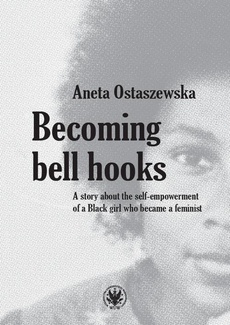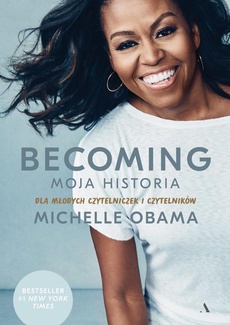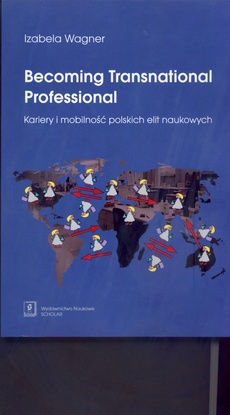INNE EBOOKI AUTORA
Becoming bell hooks
A story about the self-empowerment of a Black girl who became a feminist
Autor:
Wydawca:
Format:
ibuk
Stając się bell hooks. Opowieść o samoupodmiotowieniu czarnoskórej dziewczyny, która została feministką
Niniejsza książka to opowieść o Glorii Jean Watkins (1952-2021), czarnoskórej kobiecie z małego miasteczka w Kentucky, która stała się bell hooks – ikoną feministyczną, jednym z najbardziej znaczących i odważnych głosów współczesnej debaty na temat dyskryminacji rasowej, feminizmu oraz praw kobiet i mniejszości. Autorka skupia się na autobiograficznym wymiarze twórczości bell hooks – jest to opowieść o „pracy biograficznej” kobiety, która tworzy siebie w trakcie pisania swojej autobiografii.
Publikacja na licencji Creative Commons Uznanie autorstwa 3.0 PL (CC BY 3.0 PL) (pełna treść wzorca dostępna pod adresem: http://creativecommons.org/licenses/by/3.0/pl/legalcode).
******
This book is the story of Gloria Jean Watkins (1952-2021), a Black woman from a small town in Kentucky who became a bell hooks – a feminist icon, one of the most significant and courageous voices of the contemporary debates on racial discrimination, feminism, and women’s and minority rights. The author focuses on the autobiographical dimension of bell hooks’ essays – it is a story about “biographical work” of a woman who creates herself in the course of writing her autobiography.
The publication is licensed under the Creative Commons Attribution-ShareAlike 3.0 Poland license (CC BY 3.0 PL) (full license available at: https://creativecommons.org/licenses/by/3.0/legalcode).
| Rok wydania | 2023 |
|---|---|
| Liczba stron | 162 |
| Kategoria | Publikacje darmowe |
| Wydawca | Uniwersytet Warszawski |
| ISBN-13 | 978-83-235-6217-7 |
| Numer wydania | 1 |
| Język publikacji | angielski |
| Informacja o sprzedawcy | ePWN sp. z o.o. |
POLECAMY
Ciekawe propozycje
Becoming Moja historia Dla młodych...
do koszyka
Bella, ciao
do koszyka
Bella Donna
do koszyka
Bella Figura
do koszyka
Bella i Sebastian
do koszyka
Bella i Sebastian
do koszyka
Bella wraca do domu
do koszyka
Bella wraca do domu
do koszyka
Spis treści
| Preface | 7 |
| Introduction: why bell hooks? | 8 |
| 1. Autobiography as a research field 17 | |
| 1.1. An attempt at a definition | 17 |
| 1.2. Extra-textual understanding of autobiography | 30 |
| 1.3. Women’s autobiographical writing | 31 |
| 1.4. Features of women’s autobiographical writing | 32 |
| 1.4.1. Experience | 33 |
| 1.4.2. Relationality | 41 |
| 1.4.3. “The personal is political” | 46 |
| 1.4.4. Writing as an empowerment strategy | 48 |
| 2. Biographical work as a tool for self-empowerment 50 | |
| 2.1. Autobiography as a practice of living | 50 |
| 2.2. Biographicity as an emancipatory and | |
| developmental potential | 52 |
| 2.3. Bildung: self-improvement and biography | 53 |
| 2.4. Biographical work in the context of self- | |
| empowerment | 56 |
| 3. The research approach 60 | |
| 3.1. Sources, research questions and stages of the | |
| study | 62 |
| 3.2. Close reading as a methodological postulate | 64 |
| 3.3. Feminist methodology as a framework for | |
| autobiographical research | 69 |
| 3.4. The biographical method | 74 |
| 3.5. Analytical strategies | 78 |
| 4. Reconstruction of bell hooks’s biography 86 | |
| 4.1. Historical and social context | 86 |
| 4.2. bell hooks, or Gloria Jean Watkins | 88 |
| 4.2.1. The pseudonym | 92 |
| 4.2.2. “Talking back”: views and writing output | 93 |
| 4.2.3. Subject bibliography | 100 |
| 4.3. Biomythography in autobiography: an introduction | |
| to analysis | 102 |
| 4.3.1. Talking Back. Thinking Feminist, Thinking | |
| Black | 103 |
| 4.3.2. Bone Black. Memories of Girlhood | 105 |
| 4.3.3. Wounds of Passion. A Writing Life | 106 |
| 5. bell hooks as a narrator, biographical subject | |
| and observer 108 | |
| 5.1. The narrator: to speak with her own voice | 109 |
| 5.1.1. The autobiographical stance | 109 |
| 5.1.2. The temporal perspective of the narrative | |
| 111 | |
| 5.1.3. The choice of experiences | 112 |
| 5.2. The biographical subject: a Black woman from | |
| Kentucky | 118 |
| 5.2.1. The feeling of loneliness: the relationship | |
| with the mother | 120 |
| 5.2.2. The art of quilting: the relationship with | |
| the grandmother | 124 |
| 6. Reception and criticism: bell hooks’s self-empowerment 126 | |
| 6.1. Writing autobiography as writing oneself | 126 |
| 6.2. “I was mapping a different destiny”: the process | |
| of becoming | 130 |
| 6.2.1. The autobiographical potential | 130 |
| 6.2.2. To speak with her own voice | 132 |
| 6.2.3. Stigma as a developmental category | 132 |
| 6.2.4. The processual nature of self-empowerment | |
| 135 | |
| 6.3. Levels of autobiographical expression | 136 |
| 6.4. Types of reality | 138 |
| 6.5. Stages of biographical work | 140 |
| Afterword: to read bell hooks | 145 |
| Bibliography | 149 |
| Index of names 159 | |


























